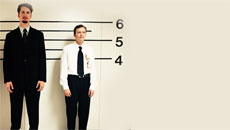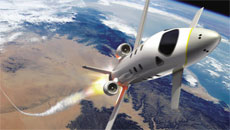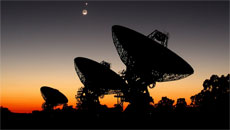Indian astrophysicist Abhas Mitra, at the Bhabha Atomic Research Centre (BARC) in Mumbai, who had once challenged the Black Hole theory of Britain's famed Stephen Hawking is in the limelight again.
Mitra's earlier research had claimed that the so-called "Black Holes" must be grey-holes and not exact black holes, and the so-called "Dark Energy" -- a topic of Physics Nobel in 2011 -- must be an artifact rather than a real entity.
His views remain uncontested till now.
This time, in a peer-reviewed paper -- and also in a comment appearing in the prestigious journal Nature -- Mitra demolishes the latest and much publicized claim of "direct evidence of cosmic inflation" -- one of the key pillars of Big Bang model (BBM). Right now his paper is the 5th most downloaded article in the journal New Astronomy.
Inflation, or exponential expansion, is what cosmologists say happened to the nascent universe almost immediately after it was created out of nothing in a powerful explosion some 13.8 billion years ago.
As the theory goes, "inflationary" phase that lasted for a tiny fraction of a second dramatically increased the volume of the universe by an unimaginable factor of ten raised to power of 78.
Cosmologists believe that the short but rapid expansion would have generated gravitational waves, and that their detection would be an evidence of inflation and hence Big Bang. But the primitive gravitational waves are themselves too weak to be detected by ground-based instrument.
Hence astronomers have been searching for a distinctive mark, or signature, left behind by the gravitational waves in the so-called Cosmic Microwave Background (CMB) -- the thermal relic of Big Bang.
On March 17, a team of US-led astronomers, working with a radio telescope at the South Pole, made the startling announcement that they have indeed detected such a signature in the form of "B-mode polarization" of CMB.
This was claimed to be the first "direct evidence" of primordial gravitational waves -- and therefore inflation -- and was proclaimed as the long-sought 'smoking gun' for the theory that the universe was born in a Big Bang. Many have already hailed the discovery as worthy of a Nobel Prize.
But Mitra says the so-called smoking gun "is only a smoke screen".
His paper claims to provide proof -- based on physical and mathematical analysis -- that "the Big Bang universe can expand only in a benign linear fashion something like a car ordained to move with a uniform speed and not in the hyper accelerating manner assumed by inflation".
According to Mitra, his paper rules out not only inflationary models but also their competitors, namely the "cyclic cosmologies", where expansion of the universe is followed by contraction.
Mitra points out the present version of the Big Bang model believes that the universe is accelerating due to a mysterious "Dark Energy". But research published by him over the last decade has shown that "Dark Energy" is actually non-existent and is an artifact to explain a complex physical universe in the framework of the simplistic Big Bang model.
"Actual universe is likely to be fundamentally different from what is assumed by either Big Bang or most of the other competing models which presume the cosmic matter as a smooth perfect fluid," Mitra told IANS.
"Big Bang model is probably vacuous and a just mathematical illusion and the actual universe must be non-uniform and lumpy."
Mitra also points out that a study of cosmic Gamma Ray Bursts published last year by Stanford University physicists in the Astrophysical Journal showed no evidence of an "expanding universe" assumed by the Big Bang model.
Thus the detection of B-mode polarization signal announced recently by astronomers "cannot be hailed as evidence of either inflation or primordial gravitational waves or the Big Bang model itself", he said.
The BARC physicist is not alone in calling for caution and independent verification before celebrating the discovery.
"In order to provide compelling evidence, other possible sources of the signal need to be ruled out," report US theoretical physicists and cosmologists James Dent, Lawrence Krauss, and Harsh Mathur -- an advice also given by Neil Turok, cosmologist and director of Canada's Perimeter Institute who had worked on an inflationary model with Stephen Hawking in the 1990s.
Mitra says when it comes to cosmological theories he is reminded of the comments made by William de Sitter, the famous Dutch astronomer, who said: "It should not be forgotten that all this talk about the universe involves a tremendous extrapolation, which is a very dangerous operation".





